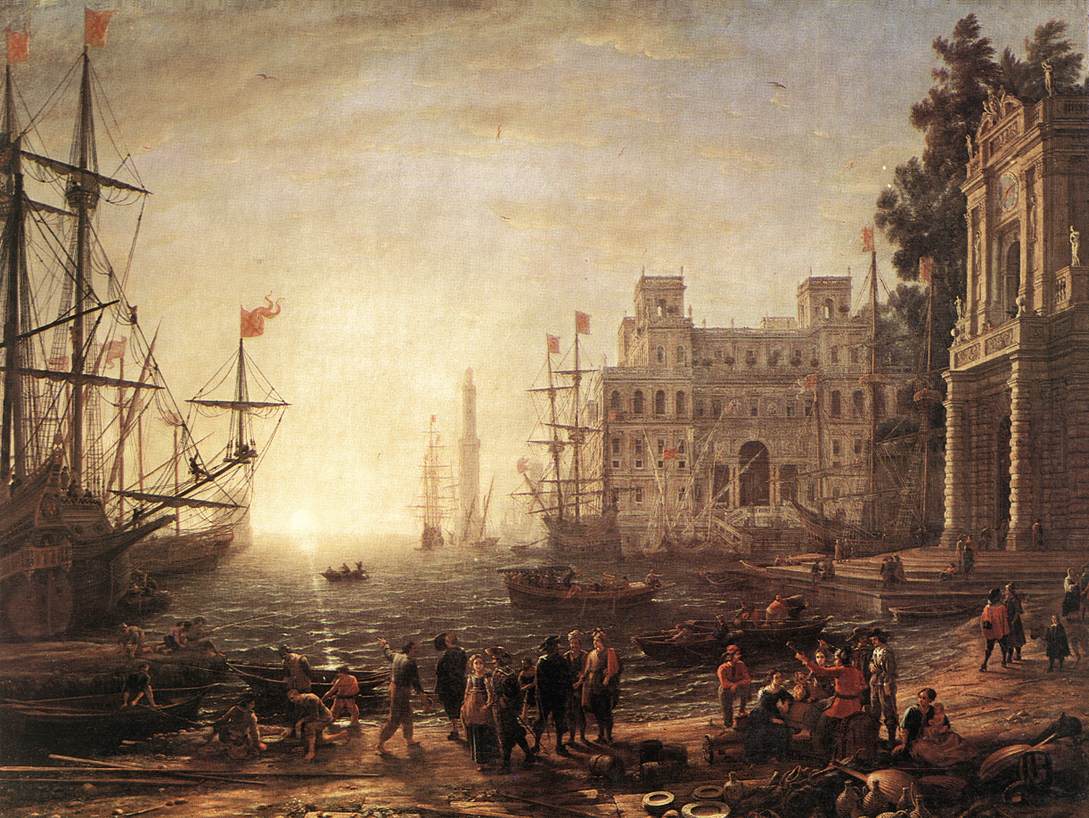Description
The painting "Port Scene with the Villa Medici" by Claude Lorrain is a masterpiece of Baroque art noted for its ability to capture the light and atmosphere of the Mediterranean coast. With an original size of 102 x 133 cm, this work presents a balanced and harmonious composition, which masterfully combines natural and architectural elements.
Lorrain's artistic style is characterized by his oil painting technique, which allows him to create light and shadow effects with great precision. In this work, the artist uses a soft and bright color palette to represent the sea, the sky and the village, which creates a feeling of serenity and calm.
The composition of the painting is divided into three parts: in the foreground is the port, with its boats and fishermen; in the background is the villa, with its gardens and terraces; and in the third plane, is the sea, with its waves and horizon. This three-dimensional structure creates a sense of depth and perspective, drawing the viewer towards the horizon.
The history of this painting is interesting, as it was commissioned by Cardinal Francesco Barberini in the 17th century to decorate his villa in Rome. The work was highly valued by art collectors of the time, and became one of Lorrain's most famous works.
One of the lesser known aspects of this painting is that Lorrain was inspired by the Renaissance villa of the Medici family to create his work. The villa, located on the Pincio hill in Rome, was a gathering place for artists and humanists, and was an important cultural center during the Baroque era.
In conclusion, "Port Scene with the Villa Medici" is an impressive work of art that combines the artistic style of Lorrain with a balanced and harmonious composition. The light and soft color palette creates a feeling of serenity and calm, while the three-dimensional structure draws the viewer towards the horizon. This painting is a jewel of Baroque art and a demonstration of Claude Lorrain's talent and skill as an artist.

